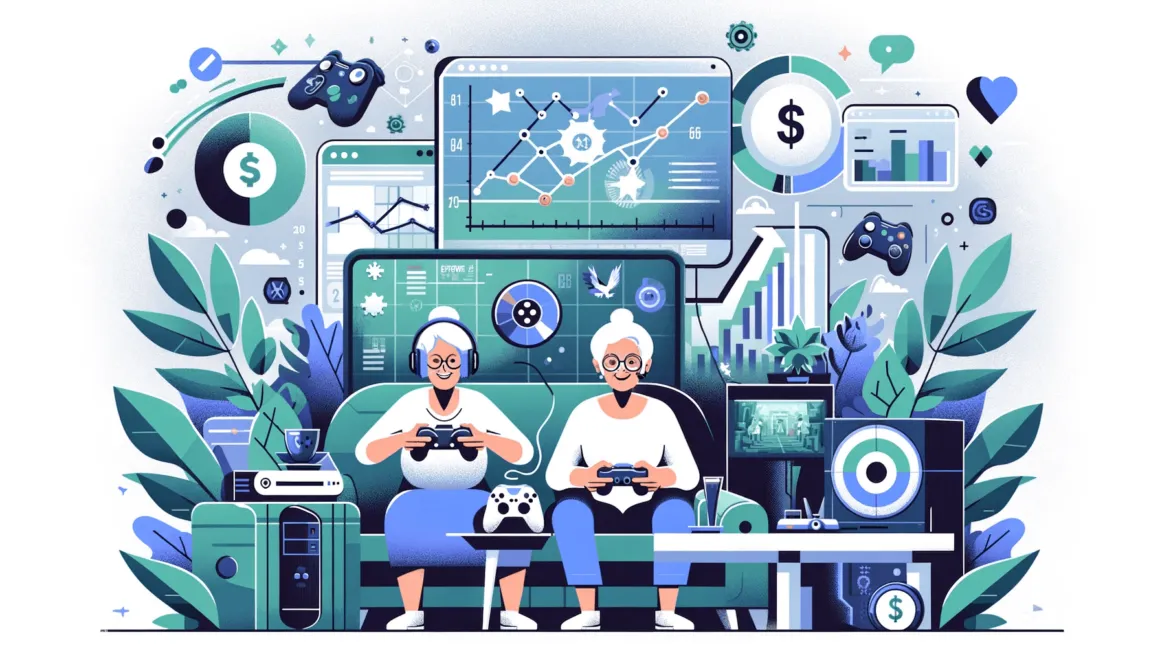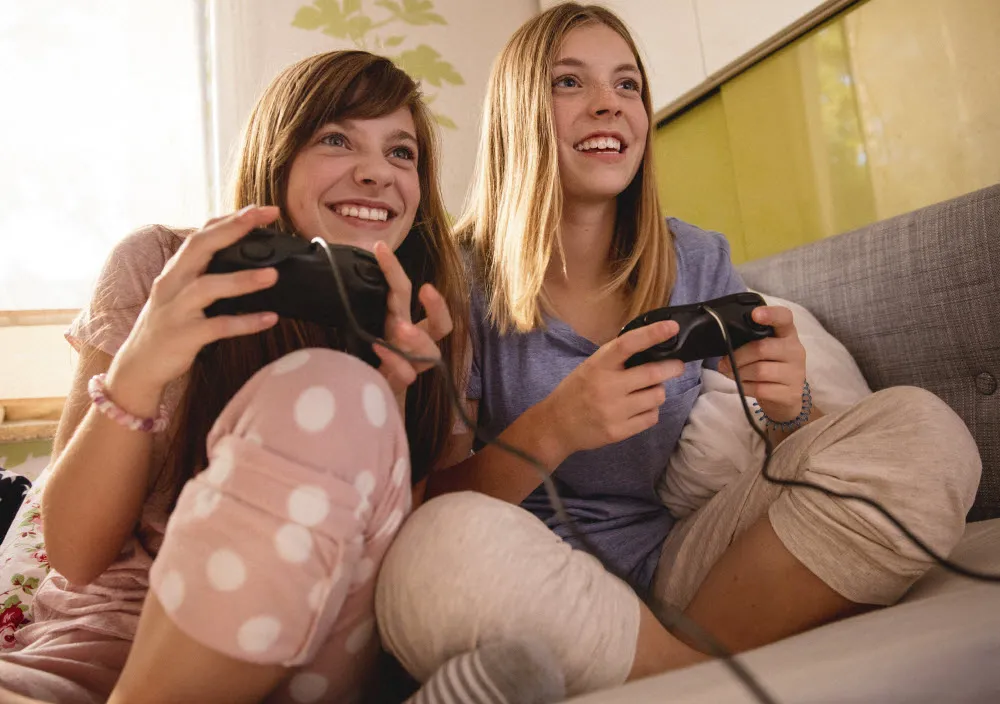Esports, or electronic sports, has quickly become a global phenomenon in recent years. With professional gamers competing in tournaments for massive prize pools and millions of viewers tuning in to watch, it’s no surprise that esports has gained mainstream recognition and popularity.
While the industry is dominated by male players, there has been a growing interest and participation from women in esports. But just how many women are esports gamers? In this article, we will delve into the statistics and explore the current landscape of female participation in esports.

The Rise of Esports and Female Representation
Before we dive into the numbers, let’s first establish the growth and impact of esports on the gaming industry and beyond. Esports is the competitive playing of video games, often in organized tournaments with large audiences and prize money. It involves professional teams or individual players competing against each other in popular games such as League of Legends, Dota 2, and Counter-Strike: Global Offensive.
According to a report by Newzoo, a leading provider of market intelligence covering the global games, esports, and mobile markets, the esports economy is estimated to reach $1.1 billion in 2020. This includes revenue from advertising, sponsorships, media rights, game publisher fees, merchandise, and ticket sales.
In terms of viewership, esports has a massive global audience. In 2019, the total global esports audience reached 443 million, and this number is expected to increase to 495 million in 2020. By region, Asia-Pacific has the largest share of the esports audience, followed by North America and Europe.
With such a significant presence and influence in the gaming and entertainment industry, it’s no wonder that esports has also caught the attention of major brands and companies. Major corporations like Coca-Cola, Red Bull, and Intel have invested heavily in esports, sponsoring teams and tournaments, and positioning themselves as key players in this space.
But what about female representation in esports? While there has been a long-standing stereotype that video games are predominantly played by men, the rise of esports has brought more attention to the participation of women in gaming. Let’s take a closer look at the numbers and explore the current state of female gamers in esports.
The Numbers: A Breakdown of Female Gamers in Esports

According to a recent report by Statista, an online statistics database, female players account for just 35% of the total esports audience. This means that out of the estimated 495 million global viewers in 2020, only around 173 million are women.
While this number may seem substantial, it’s important to note that the majority of these female gamers are casual players and not professional esports competitors. As of 2020, only 6% of all active esports players and 35% of all casual esports players are female.
To further break down the numbers, let’s take a look at the top three regions with the highest number of female esports players:
- Asia-Pacific: 73.2 million
- Europe: 39.4 million
- North America: 34.9 million
Out of these regions, Asia-Pacific also has the largest percentage of female esports players, making up 7% of the region’s total esports audience. This is followed by Europe at 6% and North America at 5%.
So why is there such a significant gap between male and female participation in esports? Let’s examine some of the factors that contribute to this disparity.
Gender Stereotypes and Stigmas in Gaming
One of the main reasons for the underrepresentation of women in esports is the persistent gender stereotypes and stigmas surrounding gaming. Historically, video games have been marketed towards and primarily played by men, perpetuating the belief that gaming is a male-dominated hobby.
This stereotype has also led to the perception that women are not as skilled or interested in video games as men. As a result, female gamers have often faced discrimination and harassment in online spaces, with many receiving sexist and derogatory comments from their male counterparts.
Lack of Representation in the Industry
The lack of representation of women in the esports industry is another crucial factor contributing to the gender gap. In a predominantly male-driven industry, it can be challenging for women to break into the competitive scene and gain recognition and support.
There is also a shortage of female role models and mentors in esports, which can make it difficult for aspiring female players to find inspiration and guidance. Without proper representation, women may feel discouraged or intimidated to participate in esports, leading to a lack of diversity in the industry.
Accessibility and Inclusivity
While the rise of esports has opened up new opportunities for gamers worldwide, there are still some barriers that prevent women from fully participating in the competitive scene. One significant barrier is accessibility, particularly in developing countries where internet access and technology may be limited.
Furthermore, the lack of inclusivity and diversity in esports can also hinder female participation. With a majority of male players dominating the field, it can be challenging for women to find a welcoming and supportive community within esports.
Breaking Barriers: Efforts to Increase Female Representation in Esports

Despite the current gender gap in esports, there have been efforts to promote and increase female representation in the industry. This includes initiatives from major companies, organizations, and individuals who believe in the importance of diversity and inclusivity in esports.
Initiatives by Major Companies
In recent years, several major companies have taken steps to promote female participation in esports. For example, Intel launched the “AnyKey” initiative in 2016, a diversity and inclusion initiative aimed at making esports more accessible and welcoming for underrepresented groups, including women. Through AnyKey, Intel has partnered with various organizations to host events and workshops that promote diversity and provide support for female players.
Similarly, the gaming company Blizzard Entertainment launched the “Heroes of the Dorm” tournament, which features all-women teams competing against each other in Heroes of the Storm. This event aims to showcase the talents of female players and provide them with a platform to gain recognition and representation in esports.
Women-Only Tournaments and Leagues
In recent years, there has also been a rise in women-only tournaments and leagues in esports. These competitions provide female players with opportunities to compete against each other on an equal playing field and gain experience and exposure in the industry.
One such tournament is the Intel Challenge, hosted by the Electronic Sports League (ESL). The Intel Challenge is an all-female Counter-Strike: Global Offensive tournament that offers a significant prize pool and a chance for female players to showcase their skills.
Additionally, there are also all-women leagues such as the Women’s Esports League (WEL) and the Female Legends League (FLL) that organize regular tournaments for female gamers. These initiatives not only help to bridge the gender gap but also provide a supportive community for female players in the esports scene.
Role Models and Mentorship Programs
Another crucial aspect of promoting female representation in esports is the presence of role models and mentorship programs. As mentioned earlier, the lack of representation and visibility of women in esports can hinder the growth and participation of female players.
To address this, various organizations have launched mentorship programs and initiatives to provide support and guidance for aspiring female players. For example, the nonprofit organization Girls Make Games offers summer camps and workshops that encourage girls to explore careers in game development and esports.
Conclusion: The Future of Women in Esports
While there is still a significant disparity between male and female participation in esports, there have been promising developments and initiatives to promote diversity and inclusion in the industry. As the esports scene continues to grow and evolve, it’s crucial for there to be greater representation and support for female gamers.
With more companies and organizations recognizing the importance of inclusivity and diversity, we can hope to see a more significant presence of women in esports in the future. It’s time to break the barriers and create a more welcoming and inclusive space for all gamers, regardless of gender.